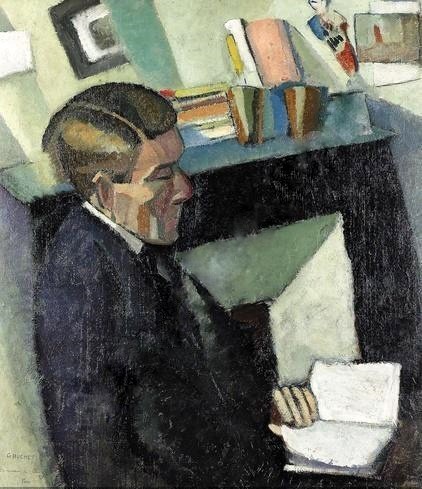Blast from the Past: This entry first posted on July 29, 2019; repost on October 23, 2021. This one got lots of hits, downloads, and reprints the first time around. I think this was for two reasons: First, round robin continues to be widely used in reading programs and for much of the reading done in social studies and science. Second, this posting included not just reasons not to use round robin, but it offered some practical guidance to do better. It is always works best to tell people what they can do, rather than focusing on what they can’t or what they shouldn’t.
Teacher question:
I teach fourth-grade social studies at my school, and I have an ongoing argument with our reading coach. Perhaps you can help me. She says that the way I teach is bad, but it works, and I see no reason to change. My students take turns reading paragraphs aloud and when each one finishes then I ask them questions or explain what the book said. I like it because the students are attentive and when I do have them try to read the book silently, they don’t get it. Can you help me with the reading coach?
Shanahan’s response:
You know, when I became a teacher, the professors were telling us that, too. They told us that what they called “round robin reading” was a horrible practice and that only bad teachers used it.
In fact, I agreed with their judgment. I could remember such turn-taking reading when I was a boy. Our teachers were pretty harsh, so when a student made a mistake or read the wrong sentences, it was terribly embarrassing.
We were supposedly paying attention when the other kids read, but what we were really doing was counting sentence so that we could practice a bit and miss out on the embarrassment.
That, of course, didn’t always work.
One day, I thought I’d figured out which lines I was supposed to read, and I would have if the kid before me hadn’t screwed up. The teacher rapidly assigned that kid’s part to me and I wasn’t even sure where to start.
I looked dumber than usual!
No, I was not a big fan of round robin reading. The professors were right. Round robin was bad.
Then I became a third-grade teacher, and I had my own social studies book to teach.
And, I bet you can guess what I did. I used round-robin reading. I used because it kept the kids on task, I could be sure they read the text, and frankly, I didn’t know what else to do. Sound familiar, right?
Nevertheless, I still agree with your reading coach. I was wrong and, respectfully, I suspect that you are, too. As are literally thousands of teachers—they were telling me not to do it 50 years ago, but these days round robin appears to still be de rigueur (Ash, et al., 2009), and it will be 50 years from now if we don’t end it ourselves.
What does all that mean? Simply that while I sympathize with you, I think there are better ways to go in terms of teaching social studies and teaching reading.
By grade four, kids should be doing most of their reading for comprehension silently, not orally. Studies have long shown that 9-year-olds comprehend better reading aloud than silently but you have to start somewhere. I’d encourage you to try.
Last year I was working with a group of middle-school kids. I assigned some pages in their social studies book and, just like you, when we reached the discussion, it was evident that they had blown off the reading. I guess I could have gone back to oral reading—I would have all those years ago. But this time I went the other way. I told the kids how disappointed I was and gave them a second chance. On that go round, they did the reading—perhaps not perfectly, but they did the reading and that is a start.
Talk to your kids about the importance of silent reading, tell them why you want them to get some practice in doing it, and that they are going to have learn to read social studies and science and the books from other subjects silently.
Initially, keep the text segments brief—maybe a paragraph each, just as you were doing with your round robin reading. That will allow you to question the kids about the content and you’ll be able to tell how they are doing. When they have trouble with it, have them read it again. (You will be teaching social studies, reading, and persistence).
If they still have trouble, have them read a sentence at a time and question them intensively. For example, here is a sentence from a fourth-grade social studies text:
In the Middle Ages, monasteries and convents had libraries.
Where were the libraries?
What is a monastery?
What is a convent?
What is a library?
When were the libraries in the monasteries and convents?
Once the kids start having some success, move the goal. If they can read single sentences silently with comprehension, then have them try paragraphs. If they can handle single paragraphs, then try assigning 2 or 3. Keep stretching them out.
Recently, I was speaking to some teachers about the teaching of oral reading fluency (that is teaching kids to read text aloud with accuracy and with appropriate speed and expression). Research shows that teaching kids to read text fluently has a positive impact on reading comprehension.
The teachers wanted to know if they could use round robin to support fluency development.
The fluency instruction that has worked does require that the kids do oral reading, and round robin reading is certainly oral.
But there are some problems that would have bothered my old professors.
One thing I should point out is that kids get to do very little reading in your social studies lessons. The only kids who are really reading is the sweaty-palmed ones who are reading aloud (the other kids aren’t really following along).
Let’s face it, in a 30-minute social studies lesson, each kid would typically get to read a minute or less. That means social studies would add fewer than three hours of reading time per year—not enough to help the kids.
What if, instead of that, you had the kids read sections of the text aloud to each other (partner reading) and then discuss and answer your questions? You should circulate among the partners making sure that they are reading well and when they are not, they need to reread; such repeated reading is effective in promoting fluency.
The reading part of social studies can be done quite effectively either silently — giving kids great reading comprehension practice; and it can be done orally using partner reading and repeated reading (and this can be supplemented with some occasional reading while listening, that is chorally reading the material along with you (I’d lead off with that, and then turn the kids loose on it, either silently or aloud).
When I talk to middle school and high school social studies teachers, they tell me the worst barrier to their success is the fact that their students often struggle to read social studies texts. They, too, fall into the trap of round robin reading (because the kids don’t act out and they can be sure they cover the material that way). Sounds familiar right?
Why not help them out?
Start teaching your kids to read social studies now. Instead of finding a way around that goal with round robin reading that gives kids way too little practice and not exactly the right kind of practice, let’s plunge kids into reading and rereading their social studies silently and orally in an effort to try to figure out the content.
My regards to your reading coach.







Comments
See what others have to say about this topic.